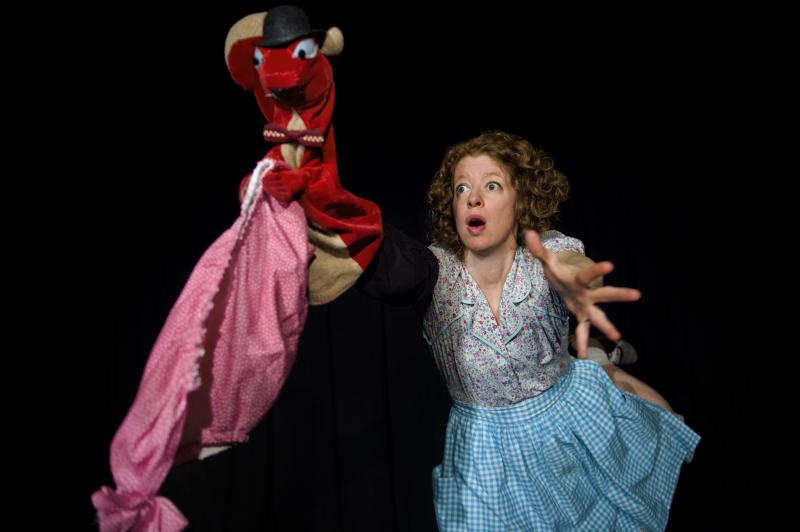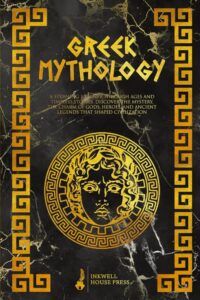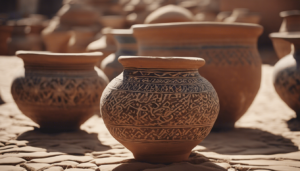Puppetry is a captivating art form that transcends cultural boundaries, intricately weaving together stories, traditions, and emotions from diverse cultures around the globe. This exploration encompasses various types of puppetry, ranging from hand puppets to Bunraku, and emphasizes their vital role in cultural storytelling and representation, highlighting their cultural significance and expressive medium in visual arts.
The investigation includes a focus on different regions, analyzing how puppetry influences performance art, cultural narratives, and storytelling across Asia, Europe, Africa, and the Americas, with an emphasis on cultural diversity and historical context. This discussion addresses contemporary applications, challenges, and the impact of technology on this ancient craft, highlighting its significance in cultural preservation, cultural storytelling, and as a medium for intercultural dialogue and community engagement.
This inquiry aims to reveal the enduring magic of puppetry as both an educational tool and a medium for cultural transmission and cultural heritage preservation.
Types of Puppetry
.jpg_00.jpeg)
Puppetry is a multifaceted and dynamic form of performance art that encompasses a wide range of styles, techniques, and cultural interpretations worldwide, each contributing to the rich tapestry of artistic expressions inherent in tradition, folklore, and visual storytelling.
By examining the various types of puppetry, one can appreciate how these art forms not only provide entertainment but also function as essential tools for cultural preservation, community storytelling, and cultural exchange, fostering intercultural dialogue and community building.
They reflect the unique identities and heritage of diverse cultures.
Hand Puppets
Hand puppets represent one of the most accessible and engaging forms of puppetry, specifically designed to fit over the puppeteer’s hand. This design allows for expressive gestures and interactive storytelling that captivates audiences of all ages.
The mechanics and design of hand puppets facilitate a unique integration of creativity, character development, and narrative forms, enabling performers to imbue characters with life through simple yet compelling movements.
Historically, hand puppets have functioned as a significant cultural medium, reflecting societal values and providing social commentary on the human experience through storytelling mediums. These captivating figures not only entertain but also promote audience participation, fostering a connection that goes beyond mere observation.
As various puppetry techniques continue to evolve, performers consistently engage in experimentation, enhancing their creations to elicit laughter, empathy, and emotional resonance, highlighting the innovation in puppetry as an expressive medium. This ongoing innovation underscores the importance of hand puppets within the realm of performance art.
Marionettes
Marionettes are intricately crafted puppets that are controlled by strings, providing puppeteers with the ability to animate complex characters through detailed movements and emotional expressions, thereby enhancing the narrative arts.
By mastering various manipulation techniques and artisan skills, puppeteers can evoke a wide range of emotions in puppetry and construct compelling artistic narratives that resonate with audiences, enhancing audience interaction. The delicate balance of tension and release in each string can transform a seemingly lifeless figure into a relatable character, effectively engaging viewers in the story.
Each subtle gesture, whether it is a simple turn of the head or a sweeping movement across the stage, contributes to the development of personality and intent, enabling marionettes to convey messages that may not be fully expressed through words alone.
The craftsmanship involved encompasses not only the puppet’s design but also the skill and creativity of the performer, resulting in each performance being a uniquely enriching experience.
Shadow Puppets
Shadow puppets employ light and shadow to craft visually engaging narratives, presenting a distinctive medium that merges visual storytelling with cultural artifacts to create an immersive experience for the audience, preserving oral traditions and symbolism.
This ancient art form, with historical roots in various cultures such as Indonesian, Chinese, and Indian traditions, serves not only as a source of entertainment but also as a significant means of preserving and conveying societal values, mythologies, and folklore.
The meticulous craftsmanship involved in the creation of these puppets underscores the artistry of their makers, while the techniques of manipulation, voice narration, and music further enrich the storytelling experience.
Performances frequently draw from deep-rooted traditions and are imbued with local customs, enabling viewers to connect with their heritage through a captivating interplay of light and shadow, eliciting emotions that transcend both time and culture.
Rod Puppets
Rod puppets represent a versatile category of puppetry distinguished by a rod mechanism, which provides puppeteers with enhanced control over movement and expression, thereby strengthening the connection between the performance and the audience.
These puppets serve not only as a medium for engaging narratives but also as a reflection of the rich diversity of cultural traditions, artistic styles, and cultural heritage found within various communities. By employing expressive techniques, puppeteers are able to convey complex emotions and intricate stories that resonate profoundly with spectators.
Community engagement often lies at the core of rod puppet performances, as these presentations bring local stories and folklore to life, fostering a deeper appreciation for shared heritage. This artistic form promotes artistic collaborations among artists and audiences, transforming the performance into a communal experience that celebrates the uniqueness of cultural narratives and fosters cultural exchange.
Bunraku Puppets
Bunraku puppets represent a traditional form of Japanese puppetry, distinguished by their intricate craftsmanship and the expertise of the puppeteers who operate them in direct view of the audience. This visibility significantly enhances the cultural significance of this storytelling tradition.
This unique art form exemplifies an impressive convergence of visual artistry and narrative depth, with each puppet not only portraying a character but also embodying emotions in puppetry and themes that resonate deeply within Japanese culture and its storytelling traditions.
The puppeteers, typically attired in black to signify their invisibility, collaborate seamlessly with live narration and shamisen music, effectively animating the stories and fostering a profound emotional connection between the performance and its audience.
This captivating integration of dramatic storytelling techniques encourages viewers to engage deeply with the rich tapestry of Japanese history and folklore, underscoring Bunraku’s vital role in preserving and interpreting cultural heritage for future generations.
The Role of Puppetry in Different Cultures
.jpg_01.jpeg)
Puppetry holds a significant position in numerous cultures worldwide, acting as a dynamic medium for conveying cultural narratives and heritage through storytelling mediums and cultural transmission.
It facilitates intercultural communication and the transmission of cultural values and beliefs across generations.
Asia
Asian puppetry, characterized by its diverse styles such as Wayang Kulit and Kabuki, serves as an essential form of cultural expression that is deeply rooted in regional folklore, ritualistic practices, and historical narratives.
This ancient art form encompasses a wide array of traditions, ranging from the shadow puppets of Indonesia that perform against illuminated screens to the elaborate marionettes of Thailand, which are frequently employed to recount ancient epics.
Each style not only provides entertainment but also serves an educational purpose, imparting moral values and reflecting societal norms prevalent in Asian cultures. The connection between puppetry and storytelling is significant, as these performances often convey intricate tales of heroes, mythological figures, and notable historical events.
Such expressions enable communities to preserve their unique identities while actively engaging younger generations in their cultural heritage.
Europe
European puppetry encompasses a diverse range of styles, including marionettes, hand puppets, and shadow puppets, each of which showcases distinctive theatrical techniques and cultural heritage that have significantly impacted the art of performance.
These forms of artistic expression reflect the regions from which they originate, often incorporating local folklore, historical narratives, and community stories into their performances. For example, marionettes, with their intricate control systems, bring to life complex narratives that resonate with audiences, while hand puppets facilitate a more intimate and immediate connection between the performer and the viewer.
Shadow puppetry, conversely, employs light and silhouette to create captivating visual stories that transcend language barriers, rendering them accessible to a wide array of audiences. Each style serves not only to entertain but also to preserve the cultural identity and traditions of the communities from which they arise, thereby enriching the broader tapestry of European arts.
Africa
African puppetry is a distinguished art form that functions not only as a means of entertainment but also as a vital medium for community storytelling and social commentary, deeply intertwined with indigenous practices and cultural beliefs.
This captivating tradition has been transmitted through generations, reflecting the rich tapestry of African heritage. By employing intricate puppets and dynamic performances, artists engage audiences in narratives that resonate with their everyday experiences.
Through vibrant storytelling, these puppet shows serve as powerful platforms for critiquing societal issues, addressing themes such as governance, inequality, cultural identity, and social commentary, fostering intercultural dialogue and community storytelling. In this manner, puppetry transcends mere amusement; it acts as an essential conduit for communal wisdom, fostering connections among viewers while encouraging critical dialogue about pertinent social challenges, highlighting its role in cultural representation and as a medium for puppetry as activism.
Therefore, the cultural significance of puppetry as a performance art and educational tool within African cultures is profound and cannot be understated. It serves as a medium for cultural preservation, storytelling, and the transmission of oral traditions.
North America
In North America, puppetry is influenced by a diverse array of cultural elements, often reflecting the region’s rich folklore and cultural identity through various forms, including marionettes and hand puppets. It stands as an expressive medium that captures the essence of cultural storytelling.
This art form represents a vibrant tapestry composed of indigenous traditions, immigrant narratives, and contemporary stories, showcasing a remarkable blend of styles that resonate with audiences across all demographics. Puppet shows and community engagement events are common, highlighting the historical context and cultural diversity of the region.
From the vividly colored puppets featured in street festivals to the intricate designs showcased in theatrical productions, the evolution of puppetry in this region mirrors societal changes and historical developments.
The integration of storytelling traditions not only highlights the shared experiences of communities but also underscores the importance of preserving these time-honored folk tales, which serve as vital symbols of cultural heritage. Through ritualistic practices and interdisciplinary artistic expressions, such tales enable new generations to connect with their roots while embracing a dynamic form of artistic expression.
South America
South American puppetry represents a vibrant manifestation of the continent’s cultural reflections, employing expressive mediums and transmedia storytelling techniques to convey intricate narratives and histories. These artistic expressions foster intercultural dialogue and highlight cultural diversity.
This art form extends beyond mere entertainment; it serves as a significant medium for disseminating traditional folklore, social commentaries, and moral lessons that resonate with audiences across diverse age groups. Puppetry as activism is evident in the storytelling mediums used to address social issues and enhance cultural representation.
From the colorful marionettes featured in Brazil’s folkloric festivals to the intricate shadow puppetry practiced in Colombia, each style articulates a unique story deeply embedded within its cultural context.
The varied techniques utilized, whether through hand puppets or rod puppets, effectively engage viewers on an emotional level, bridging generational divides and encapsulating the collective memory of communities.
By integrating elements of music, dance, and visual art, puppetry in this region not only captivates audiences but also encourages contemplation of shared cultural narratives, cultural storytelling, and their evolution over time. These narratives are enriched through immersive experiences that connect deeply with the audience.
Contemporary Use of Puppetry in Preserving Cultural Narratives
.jpg_10.jpeg)
In contemporary society, puppetry functions as an effective instrument for cultural preservation, particularly through puppetry festivals, educational initiatives, and artistic narratives. These platforms serve as engagement strategies for cultural exchange and the preservation of heritage.
These platforms engage audiences and promote a deeper understanding of diverse cultural identities and the importance of cultural diversity.
Puppetry Festivals and Workshops
Puppetry festivals and workshops serve as dynamic platforms for community engagement, enabling participants to delve into the cultural significance of puppetry as both an art form and an educational instrument that promotes creativity and collaboration. These workshops often incorporate puppetry techniques and puppet design to enhance understanding and participation.
These events encourage individuals of all ages to gather, share their narratives, and explore the rich history associated with this captivating mode of expression. Through hands-on experiences, attendees not only cultivate their artistic abilities but also enhance their understanding of the diverse traditions that puppetry represents across various cultures. This includes unlocking the artisan skills and craftsmanship involved in puppet making.
Workshops typically emphasize teamwork, allowing participants to collaborate on performance creation, thereby fostering a sense of belonging and community involvement. Puppetry workshops for schools further extend these opportunities to children’s education, promoting cultural exchange and interactive storytelling.
Ultimately, the impact of these festivals transcends mere entertainment; they provide essential opportunities for education and inspiration, bridging generational and cultural divides while celebrating the universal joys of storytelling and cultural transmission.
Puppetry in Education
Puppetry in education serves as an innovative educational tool that significantly enhances learning experiences by enabling students to explore cultural transmission and creativity through interactive storytelling and performance.
In various educational settings, ranging from classrooms to community workshops, this art form captivates learners of all ages and backgrounds. It encourages students to engage with historical narratives and diverse cultural stories, allowing them to embody characters and perspectives that differ from their own. Through the exploration of symbolism and emotions in puppetry, students can connect deeply with the material.
By integrating puppetry into the curriculum, educators create an environment conducive to imaginative exploration, thereby promoting critical thinking and collaborative skills. This hands-on approach to storytelling enhances emotional intelligence, as students learn to convey complex emotions and messages through their puppets, making the learning process both meaningful and memorable.
Puppetry in Film and Television
Puppetry in film and television employs a variety of techniques to create compelling storytelling mediums that foster an emotional connection with audiences, highlighting the versatility and creativity inherent in this art form.
This captivating form of artistic expression enables characters, brought to life through the manipulation of puppets, to resonate deeply with viewers, often eliciting a range of emotions that traditional live-action performances may not achieve.
By integrating intricate designs, skilled craftsmanship, and nuanced performances, puppetry transcends mere entertainment, serving as a powerful vehicle for complex narratives and profound themes.
Whether utilized to convey whimsical tales or darker stories, puppetry provides a unique perspective through which audiences can explore intricate ideas and develop lasting connections with the characters and their journeys.
Ultimately, this art form enriches the landscape of film and television, captivating hearts and stimulating imaginations. The role of puppetry in cinema illustrates its wider potential as a storytelling medium, representing myths and global puppetry narratives.
Challenges and Controversies in Using Puppetry for Cultural Preservation
Puppetry is recognized as a significant medium for cultural preservation; however, it confronts various challenges and controversies. Issues such as cultural representation and cross-cultural influences are at the forefront of these discussions.
These include issues of appropriation, the tension between traditional practices and modern interpretations, as well as the influence of social issues and political factors on its execution. The preservation of puppet theatre traditions alongside innovations like puppetry in digital media presents a unique set of challenges.
Appropriation and Misrepresentation
Appropriation and misrepresentation in puppetry can lead to significant cultural misunderstandings, where the depth and authenticity of cultural narratives may be overshadowed by superficial representations that fail to honor their true identity. This diminishes the rich tapestry of traditions and limits the opportunity for genuine intercultural dialogue and appreciation among diverse audiences.
When puppetry is utilized as a medium to reflect cultural stories, it becomes imperative for creators to engage with those narratives responsibly, ensuring that the voices and experiences of the originating cultures are authentically represented. Missteps in representation can inadvertently reinforce stereotypes and foster a climate of cultural insensitivity, undermining the very commentary that puppetry seeks to provide.
Ultimately, it is the responsibility of artists to navigate these complex layers with care, fostering understanding rather than perpetuating divisions.
Technology and Modernization
.jpg_11.jpeg)
The integration of technology and modernization into puppetry, particularly through digital puppetry, presents both opportunities and challenges regarding the preservation of traditional techniques while appealing to contemporary audiences. The history of puppetry is intertwined with technological advancements, providing a platform for puppetry and innovation.
As the art form evolves, practitioners are exploring innovative methods to enhance storytelling by incorporating immersive experiences that utilize augmented reality and advanced animation. This combination not only engages younger viewers but also expands the creative landscape, enabling the development of more intricate designs and lifelike movements that were previously unattainable. Puppetry and technology thus emerge as key components of this evolution.
However, the reliance on technological tools raises concerns about the potential dilution of the essence of traditional puppetry, leading to questions of authenticity and the preservation of handcrafted artistry. Striking a balance between these advancements necessitates a thoughtful approach, as the future of the medium is contingent upon honoring its roots while simultaneously embracing the new opportunities that technology affords.
Political and Social Influences
Political and social influences significantly shape the narratives within puppetry, often serving as a platform for activism and reflection on contemporary social issues through cultural dialogues. This expressive art form transcends mere entertainment, evolving into a powerful medium for critiquing societal norms and advocating for change. It highlights the role of puppetry as a healing tool and in social work.
Through the skillful manipulation of characters and narrative forms, puppetry addresses complex issues such as inequality, human rights, and environmental crises, thereby engaging audiences in meaningful conversations. Various puppeteers employ their craft to challenge oppressive regimes and raise awareness about pressing matters, showcasing the continued relevance of this ancient tradition in today’s society. Puppetry in therapy also emerges as a vital element of this narrative.
The imaginative visuals and impactful messages resonate deeply with viewers, encouraging them to contemplate their roles within society and fostering discussions that extend well beyond the theater. Audience interaction is a critical component, enhancing empathy and emotional resonance.
Frequently Asked Questions
What is puppetry and how does it relate to cultural narratives?
Puppetry is an art form where puppets are used to convey stories and messages. It plays a significant role in preserving cultural narratives and cultural heritage as it allows for the retelling of traditional stories and cultural practices through a visual and interactive medium. Puppetry and literature often intersect, enhancing the educational tool’s value.
How does puppetry contribute to the preservation of cultural narratives?
Puppetry contributes to the preservation of cultural narratives by acting as a dynamic platform where oral traditions and family stories are shared and maintained. Through puppet theatre traditions and puppetry in theatre, it fosters cultural exchange and deepens our understanding of cultural diversity and identity.
Puppetry allows for the continuation of cultural narratives by providing a platform for these stories to be shared with future generations. It also helps to keep these narratives alive by bringing them to life in a tangible and engaging way.
What are some examples of how puppetry has been used to preserve cultural narratives?
In many cultures, puppetry has been used to retell traditional folktales and legends. In India, shadow puppets are used to depict scenes from the Hindu epic, Ramayana. Similarly, in Japan, bunraku puppets are used to perform stories from Japanese folklore.
Why is it important to preserve cultural narratives through puppetry?
Cultural narratives are an important part of a community’s identity and heritage. Preserving them through puppetry ensures that these stories and traditions are not lost over time. It also helps to promote cultural understanding and appreciation.
How has puppetry evolved over time in its role of preserving cultural narratives?
Puppetry techniques and styles have evolved over time, allowing for more diverse and creative ways to preserve cultural narratives. For example, modern technologies like animatronics and projection mapping have been used in puppetry performances to enhance the storytelling experience.
What are some challenges faced in using puppetry to preserve cultural narratives?
One of the main challenges is ensuring that the authenticity and integrity of the cultural narratives are maintained while adapting them to the medium of puppetry. Another challenge is finding ways to make these performances accessible to a wider audience without diluting the cultural significance of the narratives.

My name is Bruno, I have been a writer for 5 years and I work with website creation. My goal is to provide true information to readers. In fact, on this site I write about cultures and traditions, which I have been passionate about since childhood.




